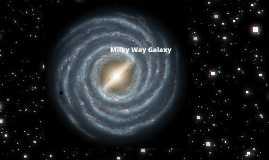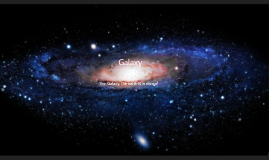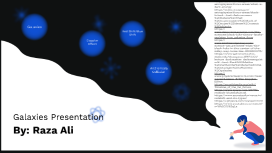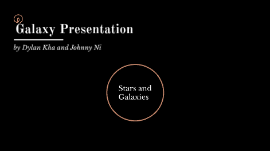Galaxy Presentation
Transcript: By Nolan Srebnick, Nina Marganti Galaxy Presentation The blue in the picture shows infrared light with wavelengths of 3.6 micron, the green represents 4.5 micron light and red, 8.0 micron light To enhance the invisibility of the dust features the starlight (3.6 microns) is subtracted from the 8 micron image Sunflower galaxy Sunflower Galaxy The Sunflower Galaxy is located in the constellation Canes Venatici. The Rotational Curves for this galaxy are currently unknown. Where is this galaxy? Other info Like the Whirlpool galaxy, the M63/Sunflower galaxy was one of the first spiral galaxies to be discovered. The galaxy is part of the M51 group of galaxies, with the M standing for Messier, after it’s discoverer. The M in the M63 also stands for Messier. M63/Sunflower galaxy is quite a compact galaxy within it’s structure, and while it has spiral arm features, they are not widely noticeable until the galaxy is studied in further depth. Hence the name Sunflower galaxy, as the spiral galaxy resembles a Sunflower. Fun Facts Fun Facts Galaxies are divided into 5 different groups in Hubble's classification such as elliptical, lenticular or S0, spiral, barred spiral, and irregular The Sunflower galaxy is classified as SA (rs)bc spiral galaxy Hubble galaxy classification system More info The Sunflower galaxy is 37 million light years from Earth The mass is 10 billion solar masses The diameter of about 60,000 light years, just a fraction of the size of the Milky Way Composed of dust and gas Distance, size, mass Info Has the physical form of a radio galaxy which means it's very luminous at radio wavelengths M49 M49 M49 is located in the constellation Virgo. The Rotational Curves for this galaxy are currently unknown. Where is this galaxy? Other Info Messier 49 was only the second galaxy discovered outside the Local Group, after Messier 83. M49 is also more luminous than any of the galaxies lying closer to Earth. Messier 49 contains a large number of globular clusters, estimated at 5,900. The globulars detected in M49 have an average age of about 10 billion years. Fun Facts Fun Facts About 56 million light-years away in the equatorial constellation of Virgo The mass is 565 million times the mass of the Sun Diameter of about 170,000 light years or size of 10x8 arc minutes Classification- E4, elliptical galaxy Galaxy appears small and diffuse with a bright compressed central core Distance, mass, size, composition, classification Other info Combines a wide range of wavelengths spanning the ultraviolet, optical, and infrared parts of the spectrum. IC 559 IC 559 ic 559 is located in the constellation Leo. The Rotational Curves for this galaxy are currently unknown. Where is this galaxy? Other Info Discovered in 1893, IC 559 lacks the symmetrical spiral appearance of some of its galactic peers and not does not conform to a regular shape. IC 559 may have once been a conventional spiral galaxy that was then distorted and twisted by the gravity of a nearby cosmic companion. Fun Facts Fun Facts Makes up a quarter of all known galaxies Does not fall into any regular classes of the Hubble classification system Sm galaxy, irregular galaxy (with evidence of a spiral structure) Full of gas and dust which is spawning new stars Mass- unknown Size, mass, distance, composition, classification Other info https://www.messier-objects.com/messier-63-sunflower-galaxy/ https://www.nasa.gov/mission_pages/spitzer/multimedia/m63-irac.html https://www.ouruniverseforkids.com/m63-sunflower-galaxy/ https://www.messier-objects.com/messier-49/ https://www.nasa.gov/content/goddard/hubble-paints-a-spattering-of-blue https://dept.astro.lsa.umich.edu/resources/ugactivities/Labs/GalClass/GalClass.html http://www.messier.seds.org/Pics/More/m49a.jpg https://freestarcharts.com/messier-63 https://www.constellation-guide.com/sunflower-galaxy-messier-63/ http://www.stardoctor.org/M63.html https://en.wikipedia.org/wiki/Messier_49 https://freestarcharts.com/messier-49 https://www.messier-objects.com/messier-49/ https://www.nasa.gov/content/goddard/hubble-paints-a-spattering-of-blue Sources Sources

















